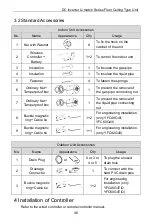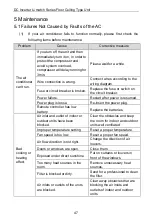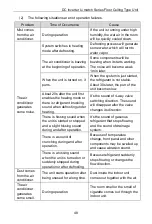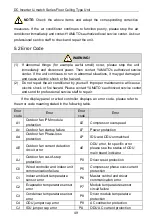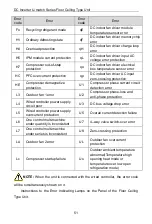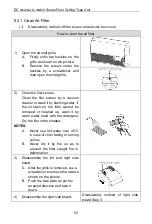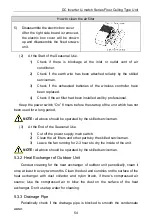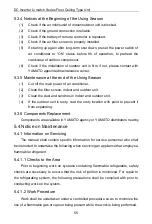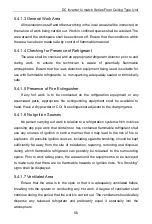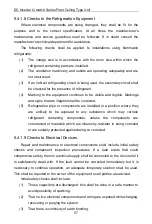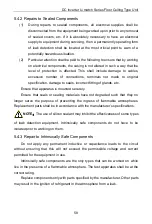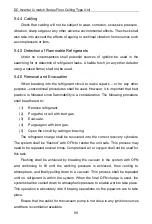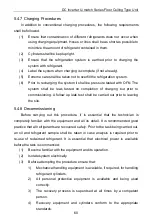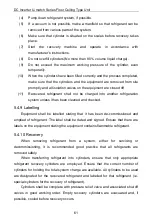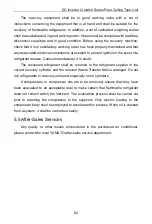
DC Inverter U-match Series Floor Ceiling Type Unit
59
5.4.4 Cabling
Check that cabling will not be subject to wear, corrosion, excessive pressure,
vibration, sharp edges or any other adverse environmental effects. The check shall
also take into account the effects of ageing or continual vibration from sources such
as compressors or fans.
5.4.5 Detection of Flammable Refrigerants
Under no circumstances shall potential sources of ignition be used in the
searching for or detection of refrigerant leaks. A halide torch (or any other detector
using a naked flame) shall not be used.
5.4.6 Removal and Evacuation
When breaking into the refrigerant circuit to make repairs – or for any other
purpose –conventional procedures shall be used. However, it is important that best
practice is followed since flammability is a consideration. The following procedure
shall be adhered to
:
(1) Remove refrigerant.
(2) Purge the circuit with inert gas.
(3) Evacuate.
(4) Purge again with inert gas.
(5) Open the circuit by cutting or brazing.
The refrigerant charge shall be recovered into the correct recovery cylinders.
The system shall be “flushed” with OFN to render the unit safe. This process may
need to be repeated several times. Compressed air or oxygen shall not be used for
this task.
Flushing shall be achieved by breaking the vacuum in the system with OFN
and continuing to fill until the working pressure is achieved, then venting to
atmosphere, and finally pulling down to a vacuum. This process shall be repeated
until no refrigerant is within the system. When the final OFN charge is used, the
system shall be vented down to atmospheric pressure to enable work to take place.
This operation is absolutely vital if brazing operations on the pipework are to take
place.
Ensure that the outlet for the vacuum pump is not close to any ignition sources
and there is ventilation available.


